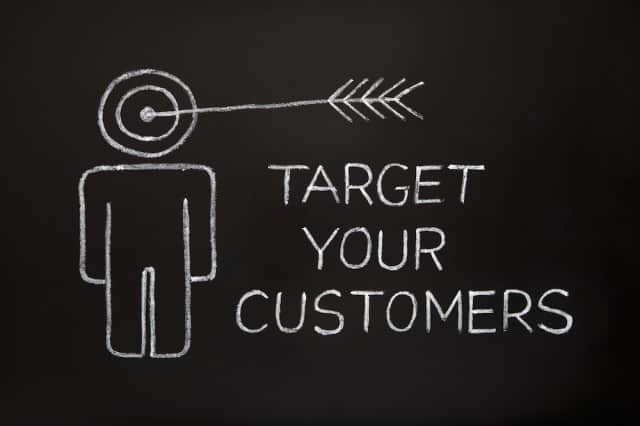A few weeks back, when Melissa Fach wrote “Focus on the Outstanding: Write Less and Write Better,” I rejoiced. No, I mean REALLY rejoiced, so much so that you likely heard me clapping and screaming from north Texas to whatever part of the world you live in. Hers were words content marketers needed to hear but, sadly, don’t hear nearly often enough. She was saying what all of us know yet have largely been too timid to write: “Most of what suffices as writing is actually crap. Go do something great, or don’t do it at all.” (My words not hers, but you get the point.) Harsh but true.
However, before you put away the keyboard, recognize that it’s not entirely your fault. What’s more, the situation can remedied, provided you’re willing to focus your energy more narrowly and quite a bit deeper, which will enable you to connect with your core audience in myriad ways. Additionally, you’ll find the process accessible and easy to replicate.
How Did Content Marketing Become Such A Mess?
A lot of content folks like to blame SEOs for the lack of quality in content marketing. After all, before Google unleashed the menagerie, the web was loaded with crap content, some of which ranked quite well. However, as the Penguins and Pandas began to gnaw away at the drivel, content marketing and inbound marketing became a game ruled by content writers and content strategists, two groups who were happy to see their day arrive. Now we can ensure that the content crap onslaught subsides, as audits, inventories, governance and the like become the filters by which the web is cleansed, right?
Well, not exactly. Look at the web. No, do it. Right now. By conservative estimates, 97% (indulge me here; I’m taking liberties) of the content being published in the name of content marketing would make my eighth-grade English teacher, Mrs. Byrd, blush. It’s estimated that more than 700,000 blogs are published each day worldwide. But we don’t stop at blogs. There’s…
- Ebooks
- Podcasts
- White papers
- Infographics
- Case Studies
- GIFs
And on and on and on….

The Miasma Of Content Rubbish Is On All Of Our Hands
Even if you think SEOs screwed up content marketing (I don’t), we can all agree that us content writers and content strategists sure are proving slow at fixing the mess. What gives? We did come bearing processes, but many of those processes have proved difficult to execute, time-consuming, resource-intensive and not immediately viable. We’ve focused too much on the problem and not enough on the solution.
The example I love to use comes from the fitness and nutrition world. When someone needs to lose weight and get in better shape, the first thing they typically hear is “You have to eat less and move more.” Fewer calories in and more calories out creates a deficit that melts off the pounds. At first. Once they hit a plateau, we tell these folks to start exercising more vigorously and more frequently, adding in weight training and some “cardio.” Bam! More pounds come off. But soon, they’ve hit another plateau, and they turn to friends, magazines, the web and online groups for advice. The fusillade of information is unbearable:
- Cut calories
- Don’t eat after 6 pm
- Start sprinting
- Don’t eat carbs with fat
- Do high-intensity interval training (HIIT)
- Delete starchy carbs
- Incorporate muscle confusion
- Eat only salads and fruits
- Try Paleo
- Abolish all grain
- Do two-a-days
You picking up what I’m putting down? Any of this advice could work (though much of it has very little merit), but for someone who just needs to get into better shape to improve their health, the information overload typically leaves them confused, frustrated and on the path to backtracking.

Sounds a lot like content marketing, doesn’t it? When we don’t clearly know what to do, we revert to doing what feels natural. The aggressive content marketer, like the overeager dieter, often mistakes efficacy with viability. Like the dieter swimming in a sea of information from a sources far and wide, content marketers are getting a lot of the “what” but very little “how,” “why” and “when.” And without understanding why certain content-related efforts work better than others, they’re left to blindly assume that what works once will work again and again and again. Let’s stop the madness.
Customer Marketing Must Be The Way Forward
I’m a huge proponent of “if it’s not feasible, it’s not sustainable,” a philosophy I apply to to training and nutrition, in addition to frequently sharing it with content marketing clients as well. For example, if I’m working with the CEO of a 15-person company that needs to start increasing its digital footprint, I’ll share two things right off the bat:
- Only commit to producing as much content as you and your staff can commit to doing well
- Choose no more than two social platforms to be active on for the first 90 days
This makes content marketing manageable (i.e., feasible) and allows her to see what’s doable (i.e., sustainable) long-term.
How can your company start producing quality content?
Focus on who you are talking to, not what you’re going to talk about or the form that information should take. It’s hard for a marketer to produce crap content when she knows her audience. Much of what we call low-quality content is actually misguided content—information created without a clear audience, so it says a lot of nothing to no one specifically.
To ensure you don’t fall into this trap, think of talking to one person with every piece of content you create. For example, when sitting down to write a blog, imagine yourself as the person reading it. Who are they? What problem can you solve for them? What are they trying to accomplish?
When you do this, you make the process of writing easier and, most important, the format (i.e., ebook, infographic, blog) takes care of itself. [To aid in coming up with these ideas, keep a running list of questions and comments you receive about your product or service. Create content that answers these questions.]
Value feasibility over frequency. We hear all the time that you must blog every day. That’s complete B.S. In fact, some of the most successful blogs publish only a couple times a week or a few times a month. You’ll need to experiment to find out how often your audience expects to hear from you. However, quality trumps quantity.
A rule I believe wholeheartedly in is to only publish as often as you can do a job you are happy with and would be proud to share. To further drive home this line of thinking, I tell clients to answer this question: “Would you feel comfortable doing outreach to some of the top thought leaders in your space, asking them to share this content?” If not, don’t create it.
No, every piece of content won’t be a home run, but to be successful, you must develop a reputation for producing content that gets noticed. [Instead of focusing on the writing, spend more time brainstorming, note-taking, then begin to piece the content together digitally. Once you’re done, “massage” it and share with your staff. When it meets their approval and yours, it’s ready to be shared. Take a look at how much time it took from conception to delivery. That’s your new content frequency schedule.]
Communicate, don’t replicate. We live in a monkey-see, monkey-do world. If one blog a day works for the competition, then dammit, that’s what we need to be doing. But like the dieter, we quickly see that blindly following others’ advice only gets us so far. Worse still, we’ve learned nothing in the process, so when the progress stalls, our hopes are dashed along with it. Don’t be a blind follower.
Get to know your audience. Devote time to learning from and communicating with your existing clients and prospects. Then, commit to producing content that engages them, meets them where they are in the information-gathering process and that delivers real value to their lives. Notice I wrote “information-gathering,” not “buying” process.
You must earn the right to serve them. [Each week, set aside a few 15-minute slots to call (not email) some of your existing clients. Ask how they are doing, what, if anything, you can help them with, and let them know you’re available anytime they have a question. You’ll be amazed at how simply opening this door leads to them sharing information that could better enable your company to serve your entire customer base, while attracting new clients as well. Creating content based on the information shared likely puts you in front of the right audience with the right message.]
As you can likely tell, I’m not a big fan of “content” marketing. I prefer the emphasis be on the customer, not the information thrown at him or her. In my opinion, we can disagree all we want about what suffices as quality, but one thing is inarguable: Caring enough to create the right content for the right audience positions your business closer to success. Lest you get the wrong idea, consistently producing quality content is not an easy task.
It takes focus, discipline and the willingness to do the little things better with each new effort. The points outlined above have been used successfully by a number of clients. I’m convinced they can do the same for your business. Please drop a comment below. I’m interested to know your thoughts.


